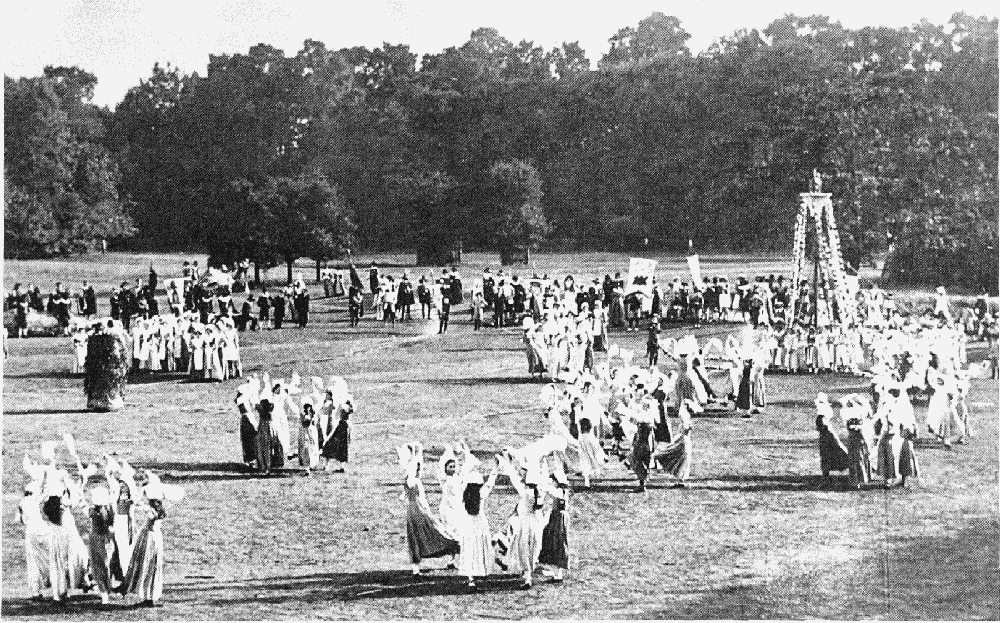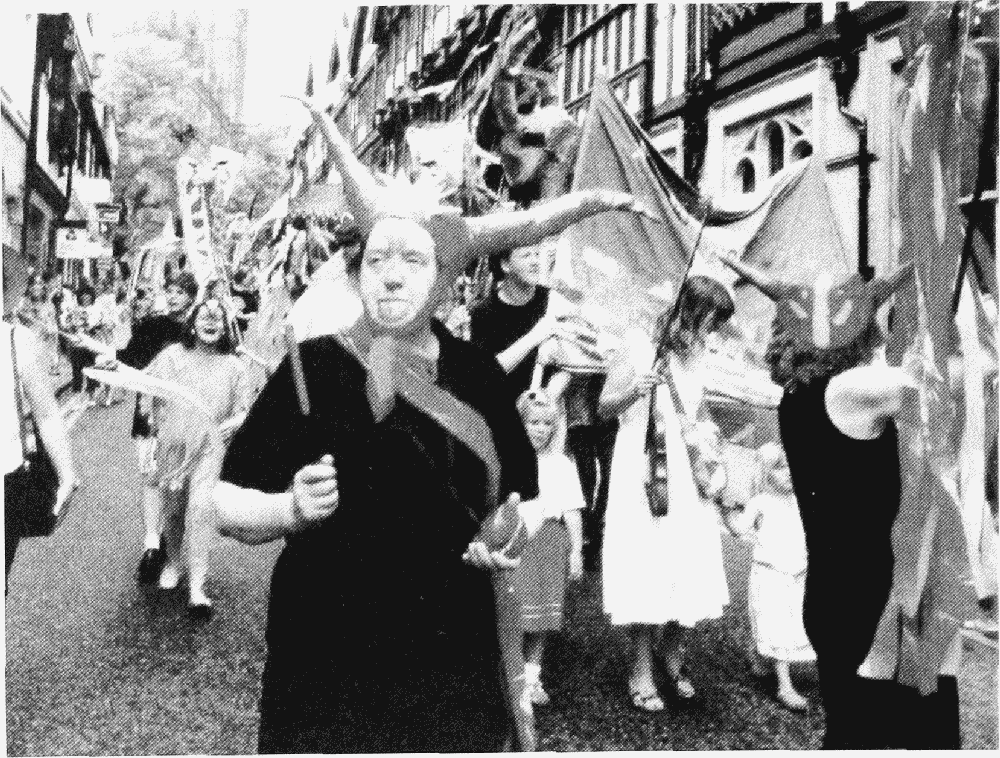Pages 275-276
A History of the County of Chester: Volume 5 Part 2, the City of Chester: Culture, Buildings, Institutions. Originally published by Victoria County History, London, 2005.
This free content was digitised by double rekeying. All rights reserved.
REVIVAL OF THE MYSTERY PLAYS
The 1818 edition by J. H. Markland, himself a Cestrian, of two plays from the Chester cycle represented the first modern edition of any English mystery plays. It was followed by improved editions of the full cycle, each in two volumes, published in 1843–7 and 1892–1916. (fn. 1)
A new interest in the performance of medieval plays was stimulated by William Poel's production of Everyman at the Charterhouse in London in 1901; it was paired with a production of Chester's Sacrifice of Isaac, the first performance of a Chester play in modern times. (fn. 2) One of Poel's company, Nugent Monck, formed his own company and staged versions of Chester's Nativity, Shepherds, and Magi plays in Bloomsbury Hall, London, in 1906. Monck wrote to the Chester Archaeological Society offering to produce the whole cycle in the traditional manner over three days at Whitsun 1907. The proposal, which must be seen against the background of Chester's music festivals and the city's growing concern with its past, would have resulted in the first complete revival of any English play-cycle. The Society organized a public meeting chaired by the bishop to discuss it. Although the dean of Chester opposed the production, the cathedral organist, J. C. Bridge, supported it, and a number of Cestrians who had seen Everyman in London or on tour reported favourably on the production. Following the meeting, the three 'Nativity' plays were performed at the Music Hall in 1906 to test local reactions. An edition of the performance-text by Bridge was published to accompany the production. (fn. 3) The production was enthusiastically received, but the society then decided that the cost of staging the full cycle was too high and the scheme fell. Local interest, including that of Bridge, was diverted instead into the Chester Historical Pageant of 1910 (Fig. 170, p. 275). (fn. 4)

Chester Historical Pageant, 1910: Midsummer Revels

Chester mystery plays in St. Werburgh Street, 1997
Objections to the alleged crudity of the plays' theology and drama, their lack of decorum, the danger of blasphemy, and the problems of understanding their language all surfaced again in the 1950s when the plays were revived as a full cycle. The first production took place in the cathedral refectory on 18 June 1951 to celebrate the Festival of Britain, the first time that the cycle as a whole had been performed since 1575. (fn. 5) The production mirrored the three-day original by being in three parts played on different days. Because of the enthusiasm of the amateur actors, public demand, and a desire to utilize the initial investment and impetus, the production was repeated the following year in a somewhat extended form. After that, performances in various styles and using various texts were staged at roughly five-year intervals, becoming an established tourist attraction. To accommodate increasing audiences, the productions transferred from the refectory to Cathedral Green in 1967 and were thenceforth given in the open, except for the 1973 production, which was held in a circus tent. The early productions were marked by a reluctance to stage the more 'realistic' scenes, including the crucifixion, and by a dramaturgy wedded to a proscenium-arch stage. The transfer to Cathedral Green marked an extension of the scale of production, an increasingly full and authentic text, and a greater concern with communal involvement.
Those developments ran alongside academic investigations which generated a pioneer study in 1955 of the text in relation to the city's records, significantly advancing understanding of medieval drama. (fn. 6) A new scholarly edition appeared in 1974 and 1986, (fn. 7) and a major compendium of the city's drama records in 1979. (fn. 8) Interest in 'authentic performance' led to processional performances of the full cycle on the university campuses of Leeds and Toronto in 1983. Chester was fortunate in having the services of academics with an interest in practical drama (John Lawlor and Rosemary Sisson in 1967; Edward Burns and Robert Cheeseman in 1985 and 1992) and in the enthusiasm for drama in its schools, evidenced in the directorship of Peter Dornford-May in the 1970s and 1980s. Knowledge of Tudor production and ceremonial thus came to serve as the starting point and inspiration for adaptations which used the resources of modern theatre and sought to involve local people.


